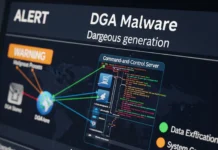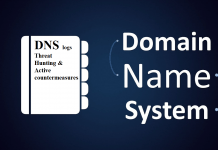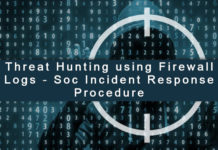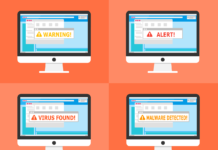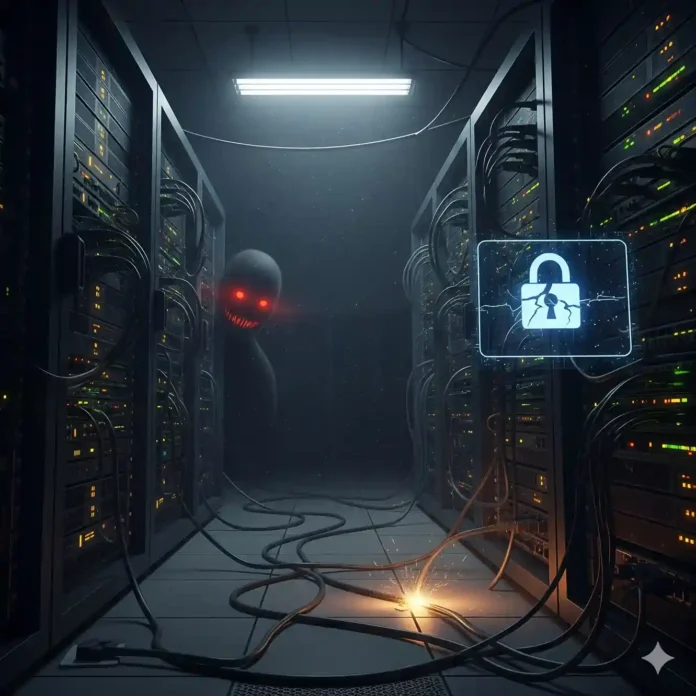Your business is running smoothly. Sales are steady, your team is productive, and the network hasn’t crashed in months. From the outside, everything seems to be working just fine. This common perception leads to a dangerous sense of security, a belief that if nothing is actively broken, then nothing needs to be fixed.
“They assume that by making thoughtful decisions from the outset, their infrastructure will remain manageable and resilient. But infrastructure quickly evolves into complex systems that are hard to control.”
— Forbes
This is the “It’s Working Fine” fallacy—the assumption that the absence of visible issues means your IT infrastructure is healthy and secure. In reality, this complacency allows subtle but serious risks to grow undetected. Beneath the surface of day-to-day operations, security gaps widen, inefficiencies mount, and vulnerabilities quietly wait for a trigger.
This article will expose the most common hidden dangers lurking in your IT infrastructure. We will detail the real business costs of ignoring them and outline proactive steps you can take to build a truly resilient and secure technology foundation for your organization.
Key Takeaways
- The “It’s Working Fine” fallacy prevents businesses from recognizing critical, unseen IT risks that can lead to significant disruptions.
- Hidden dangers like outdated systems, shadow IT, insider threats, and unsecured internet-exposed devices pose substantial financial and operational risks.
- Ignoring these subtle vulnerabilities can result in crippling downtime, data breaches, reputational damage, and much higher emergency repair costs.
- Adopting a proactive approach through comprehensive IT assessments and strategic managed services is essential for building a resilient and secure technology foundation.
Why We Ignore the Invisible: The Psychology Behind the Fallacy
If these risks are so significant, why do so many businesses fall into this trap? The reasons are often rooted in common operational realities and human psychology.
- “No News is Good News” Mentality: Business leaders are conditioned to prioritize immediate, visible problems. A potential future threat that isn’t causing a disruption today often gets pushed to the back burner in favor of more pressing concerns.
- Budgetary Constraints: Proactive IT investments are frequently perceived as costs rather than strategic necessities. When budgets are tight, preventative maintenance and system upgrades are among the first items to be deferred.
- Lack of Internal Expertise: Without dedicated IT strategy leadership, decision-makers may not have the specific knowledge to identify subtle vulnerabilities. They simply don’t know the right questions to ask about system health or the hidden signs of trouble.
This gap between perception and reality is where vulnerabilities thrive. Before you can fix a problem, you have to find it—and most hidden risks are invisible without a deliberate, expert-led investigation. To gain this clarity, businesses can partner with an IT consulting company in Anaheim to assess systems, uncover hidden risks, and implement practical strategies that align technology with business goals. This approach ensures your IT infrastructure supports operations efficiently while maintaining security and scalability.
The Top 4 Hidden Dangers Lurking in Your Network
While your systems appear stable, several critical threats may be developing just out of sight. Here are four of the most common and damaging hidden dangers.
Danger #1: Outdated Hardware and Software
Aging IT assets are more than just slow; they are significant liabilities. As hardware and software get older, manufacturers eventually stop providing security updates and patches. This leaves them exposed to a growing list of known exploits that cybercriminals can easily target. Beyond security, outdated systems struggle with performance, suffer from higher failure rates, and often lack compatibility with modern applications essential for business operations.
This issue is compounded by a trend towards longer IT asset lifecycles. As IBM notes, The Uptime Institute found the average timeframe for a hardware refresh is now five years, up from three years in 2015. While stretching a budget seems wise, it inadvertently extends your organization’s exposure to unpatched vulnerabilities.
Danger #2: The Rise of “Shadow IT”
Shadow IT refers to employees using non-approved applications, cloud services, or personal devices for work-related tasks. It happens when a team needs a tool to collaborate or share files and finds a quick solution online, like a personal Dropbox account or a free project management app, without IT’s knowledge or approval.
While often done with good intentions to improve productivity, the risks are immense. Shadow IT creates significant pathways for data leakage, can lead to non-compliance with regulations like HIPAA or GDPR, and operates completely outside of your company’s security oversight. These uncontrolled tools can also consume network resources and conflict with legitimate IT workloads, leading to observed performance degradation and unplanned storage overloads.
Danger #3: The Overlooked Insider Threat
When business leaders think about cybersecurity, they often picture an external hacker. However, one of the most significant threats comes from within. Insider threats include not only malicious employees seeking to steal data but also, more commonly, well-intentioned staff who act negligently.
These negligent actions can be as simple as falling for a phishing email, using weak passwords across multiple systems, or mishandling sensitive data. The danger is unique because insiders already possess legitimate access, making their harmful activities incredibly difficult to detect with traditional perimeter security alone. The financial risk is staggering. As one report from the University of Hawaiʻi – West Oʻahu Cybersecurity Program highlights, “83% of organizations faced at least one insider security breach last year, with companies losing on average $15.4 million per incident.”
Danger #4: Unsecured Internet-Exposed Systems
Many businesses have devices that are directly connected to the internet without proper security configurations. These can include servers, security cameras, remote management ports, and even office IoT devices. Each of these connections acts as a potential entry point for attackers if not properly secured, firewalled, and monitored.
Think of it as leaving an unlocked back door to your office building. While you focus on securing the front entrance, attackers are scanning the internet for these forgotten, unsecured entry points. The scale of this problem is vast. A recent Censys report uncovered significant exposure, finding 145,000 industrial control systems (ICS) exposed online, including thousands of unsecured human-machine interfaces (HMIs). This illustrates just how many “unlocked doors” are available to determined attackers.
The True Cost of “Working Fine”: Financial and Operational Consequences
Ignoring these hidden dangers because things “seem fine” is a gamble with serious consequences. When one of these risks materializes, the technical problem quickly translates into tangible business losses.
- Crippling Downtime: An unexpected system failure halts business. This results in direct costs from lost revenue, wasted wages for idle employees, and potential supply chain disruptions.
- Data Breach & Reputation Damage: A breach can be devastating. Beyond the costly remediation efforts and hefty regulatory fines (e.g., California Consumer Privacy Act), the long-term erosion of customer and stakeholder trust can permanently damage your brand.
- Lost Productivity: Even without a full-blown crisis, an underperforming infrastructure creates a slow, daily drain on efficiency. Sluggish networks, crashing applications, and system instability frustrate employees and reduce overall business output.
- Emergency Repair Costs: Reacting to a crisis is always more expensive than preventing one. Emergency “firefighting” IT support comes at a premium and is far more disruptive to your operations than planned, proactive management.
From Reactive to Proactive: A Strategic Framework for IT Health
Moving beyond the “It’s Working Fine” fallacy requires a deliberate shift from a reactive mindset to a proactive, strategic approach. Here is a framework to build a healthier and more secure IT environment.
Step 1: Conduct a Comprehensive IT Assessment
You can’t manage what you don’t measure. The first step is to gain complete visibility into your technology landscape. A professional assessment creates a full inventory of your hardware, software, network configurations, and security policies, allowing an expert to pinpoint specific weak points, security vulnerabilities, and compliance gaps before they can be exploited.
Step 2: Implement Proactive Monitoring and Management
It’s time to move away from the reactive “break/fix” model. With managed IT services, your systems are monitored 24/7 by experts. This continuous oversight allows for the detection and resolution of minor issues before they can escalate into critical failures, ensuring business continuity and minimizing disruptions.
Step 3: Develop a Robust Security Strategy
A modern security strategy goes far beyond basic antivirus software. It requires a multi-layered approach that includes regular system patching to close vulnerabilities, mandatory multi-factor authentication (MFA) to protect accounts, ongoing employee security awareness training to combat phishing, and clear, enforced data access policies to protect your most valuable information.
Step 4: Create a Strategic IT Roadmap
Instead of treating technology as an operational expense, view it as a strategic asset that enables growth. Partner with an expert IT consultant to develop a forward-looking roadmap for technology investments, hardware refreshes, and software upgrades. This plan ensures your technology not only supports your current needs but also scales to meet your future business goals.
Conclusion
The “It’s Working Fine” fallacy is one of the most significant yet unseen risks a business can face. It breeds a false sense of security that leaves the door open to crippling downtime, costly data breaches, and operational decay.
Breaking free from this mindset is essential for long-term stability and growth. A proactive, strategic approach to IT management is not an optional expense—it is a critical investment in your business continuity, security, and operational efficiency. Don’t wait for a crisis to expose the hidden weaknesses in your network.





